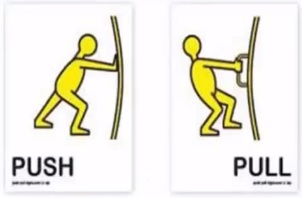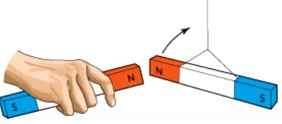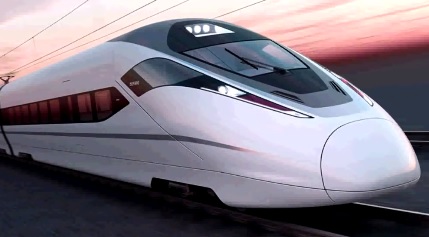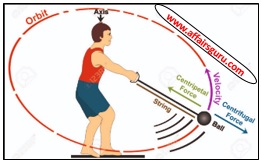Force and Its Types With Examples PDF – Meaning, Units, Characteristics

A force is a push or pull upon an object resulting from the object’s interaction with another object. Whenever there is an interaction between two objects, there is a force upon each of the objects. When the interaction ceases, the two objects no longer experience the force. Forces only exist as a result of an interaction.
Meaning of Force
When two entities come in contact with each other. This interaction causes = Movement and change in shape.
Example – Ball gets flatten on earth while bouncing on ground.
![]()
You know the many different things that force can do. Let us now study the different kinds of forces.
Types of Forces
Forces can be divided into two types based on how the force is applied.
Contact Force
When objects actually touch each other. Forces which act on a body either directly or through a connector are called contact forces. Let us look at different types of contact forces.
Muscular (Applied) Force
The force applied by humans or animals using parts of the body is called muscular force. Muscular force is a type of contact force. We called this also applied force.
Mechanical Force
The force that is applied using machines is called mechanical force. Mechanical force is a type of contact force.
Frictional Force
Friction force generally resists the movement of an object due to the no smoothness floor. The force of friction on a resting object called static friction, and on moving object, called sliding friction. Magnitude of the frictional force exerted by the surface depends on the coefficient of friction of the material from which the surface is made as well as that of object moving along it.
Tension Force
Tie a sting to a fixed object. Pull it on other end, the string pulls back until it breaks. Force the string exerts is the tension force, which is applied along its length. It is also depend on the property of materials from which the sting is made and its diameter.
Air Resistance
Objects moving across Earth’s atmosphere encounter a resistive force created by the friction generated by air moelcules. This force becomes stronger with increasing speed and increasing surface area perpendicular to the direction of motion. It is an important factor in the aviation and aerospace industry.
Spring Force
Amount of force required to compress a spring depends on the materials from which the spring is made, the diameter of wire that forms the coils and the number of coils. This kind of properties are quantified in a number characteristic of the spring called the spring constant ‘k’. The force needed to compress the spring by a distance ‘x’ is given by Hooke’s Law: F = kx.
Non-Contact Force
When objects do not touch each other.
Can you lift a bucket of water without holding it?
No. Generally, to apply a force on an object, your body has to actually touch the object. The contact may also be with the other objects – like a stick or a piece of rope.
Gravity Force
The earth pulls everything towards itself. This force is called gravity or gravitational force. It is because of gravity that any object that is thrown upwards goes slower and slower, then stops and then start coming down. Example, we give it a force in the upward direction and so the ball starts moving upwards. The speed of the ball reduces more and more and slowly becomes zero.
Why does the speed go on reducing?
Because the ball is trying to move up and gravity is trying to pull it down. Gravity makes the ball slower when it moves up. Gravity is pulling it down. As the ball starts moving downwards, the speed starts increasing. The more the ball travels down, the faster it becomes.
What happens if the ball hits the ground?
It bounces. A ball that hits the ground with more speed will bounce higher.
Gravity does not only act on objects that are thrown up. It constantly acts on all objects around us. That is why you have to apply a force to lift an object. You have to lift it against the gravitational force. If the object has more mass, more gravity is acting on it. So objects with greater mass (heavier objects) need more force to be lifted.

The greater the mass of the object, the greater is the weight. So a heavier object is pulled down more. Weight of an object is the gravitational force acting on it. So, gravity is a force that pulls everything towards the centre of the earth. Gravity is a non-contact force.
Magnetic Force
The force that is pulling the pin to magnet is called a magnetic force. Magnets have different ways in which they can behave. We know that when two like poles of a magnet come together they repel while two unlike poles attract. It is the magnetic force that makes them attract or repel. magnet is useful to separate the iron in junkyards.

The Maglev train works on the idea of magnetic repulsion – like poles repel. Magnetic Levitation = Meglev, Levitate means to raise. Magnetic levitation means raising by using magnetic power. This kind of train was invented in Great Britain but the fastest speed achieved was 580 km per hour by the Japanese people. Magnetic force is a non-contact force.


Static Electric Force
The force that is pulling the hair towards the comb is called force of static electricity. Try to rub a balloon on your hair, you will see the hairs try to stick to balloon. It is because of the force of static electricity. Now bring that balloon that you rub on hair close to paper pieces, the pieces of paper try to sticks to balloon. Static electric force is a very week force. You can’t see it move heavy objects.
Static electricity is created when we rub some objects with certain things. The force of static electricity is called static electric force. It is also a non-contact force.
Characteristics of Force
- Force is a vector quantity. Hence it must be specified with direction and its magnitude.
- It occurs due to interaction of two objects.
- Also change the shape of an object and movement.
- Formula for force is F = ma, where m is mass and a is acceleration.
Unit and Dimension Formula of Force
The product of mass of the body and its acceleration is called force. SI unit of force is newton (N=kg× m/s2) i.e. F = ma. A force is any influence that causes an object to undergo a certain a certain change, either concerning its movement, direction and geometrical structure. Force dimension formula is MLT-2
Centripetal Force
A body performing circular motion is acted upon a force which is always directed towards the centre of the circle. This force is called centripetal force. Any of the forces found in nature (such as frictional force, gravitational force, electrical force, magnetic forces etc) may act as a centripetal force.

Cyclist bends his body towards the centre on a turn while turning to obtain the required centripetal force.
Generally, in rain the scooter slips at the turning of a road because the friction between tyre and road is reduced. Due to this necessary centripetal force is not provided. Roads are banked at turns to provide the required centripetal force for taking a turn.
Centrifugal Force
In applying the Newton’s laws of motion, we have to consider some forces which cannot be assigned to any object in the surrounding. These forces are called pseudo force or inertial force. Centrifugal force is such a Pseudo force. It is always equal and opposite to centripetal force.
Cream separator, centrifugal driver etc, work on the principle of centrifugal force.
Read More Articles…
